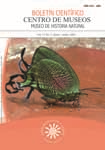Autores/as
Resumen
El presente estudio tiene como finalidad estudiar el patrón de actividad y alimentación de un grupo silvestre de micos maiceros (MC-1) del Parque Nacional Natural Tinigua (Meta, Colombia). Este grupo fue aprovisionado (es decir, que recibe diariamente una cantidad limitada de alimento –principalmente plátanos–, con fines científicos) durante más de 10 años, por tanto disfrutó de una fuente de alimento que no varía espacio-temporalmente. Por medio del método de barrido se completaron 971 horas de observación del grupo, durante seis meses en 1995-96. MC-1 invirtió 55,2% del tiempo forrajeando, seguido por movimiento (13,8%), interacciones sociales (13%) y descanso (12,1%). La actividad de espera del alimento ofrecido, denominada alerta, ocupó el 5,9% del tiempo. El grupo presentó una dieta omnívora, ingiriendo principalmente artrópodos (60,8%) y frutos (27,2%), 10,4% partes vegetales y 1,6% otros ítems. MC-1 utilizó 60 especies de plantas y consumió pequeños vertebrados, huevos y tierra de termiteros, entre otros. Tanto el patrón de actividad como el de alimentación variaron cuando el grupo fue aprovisionado, principalmente porque durante las mañanas MC1 se dedicó a la búsqueda de artrópodos y presentó bajos porcentajes de forrajeo, contrario a lo reportado para la especie. Se concluye que el alimento ofrecido suple parcialmente los requerimientos de fruto de esta tropa, por lo cual, el grupo puede incrementar el consumo de artrópodos e invirtir menor tiempo al forrajeo y mayor a otras actividades como el descanso e interacciones sociales.
Citas
BROWN, A. & ZUNINO, G., 1990. Dietary variability in Cebus apella in extreme habitats: evidence for adaptability. Folia Primatol., 54: 187-195.
CANT, J. & TEMERIN, A., 1984. A conceptual approach to foraging adaptation in primates: 316-339 (en) RODMAN, P. & CANT, J. (eds.) Adaptation for foraging in nohuman primates. Columbia University Pess, New York.
CHIVERS, D. & RAEMAERKERS, J., 1986. Natural and synthetic diets of malayan gibbons: 39-56 (en) ELSE, J. & LEE, P. (eds.) Primate ecology and conservation, vol. 2. Cambridge University Press, Cambridge.
DEFLER, T., 2003. Primates de Colombia. Serie de Guías Tropicales 4. Conservación Internacional, Bogotá, D.C.
DUMOND, F., 1968. The squirrel monkey in a seminatural environment: 88-146 (en) ROSENBLUM, L. & COOPER, R. (eds.) The squirrel monkey. Academic Press, New York.
FORTHMAN, Q., 1986. Activity budgets and the consumption of human food in two troops of baboons, Papio anubis, at Gilgil, Kenya: 221-228 (en) ELSE, J. & LEE, P. (eds.) Primate ecology and conservation, vol. 2. Cambridge University Press, Cambridge.
FRAGASZY, D., VISALBERGHI, E. & FEDIGAN, L., 2004. The complete capuchin, the biology of the genus Cebus. Cambridge University Press, Cambridge.
FREESE, C. & OPPENHEIMER, J., 1981. The capuchin monkey, Genus Cebus: 331-390 (en) COIMBRA-FILHO, A. & MITTERMEIER, R.A. (eds.) Ecology and behaviour of neotropical primates, vol. 1. Academia Brasileira de Ciencias, Rio de Janeiro.
GÓMEZ-POSADA, C., 2003. Estrategias de forrajeo de un grupo provisionado de mico maicero (Cebus apella) en el Parque Nacional Tinigua: 36-146 (en) PEREIRA, V., NASSAR, F. & SAVAGE, A. (eds.). Primatología del Nuevo Mundo: Biología, medicina, manejo y conservación. Centro de Primatología Araguatos, Bogotá.
__________., en imprenta. Cebus apella: variación en el patrón de actividad de acuerdo a la disponibilidad de frutos y artrópodos (en) ALARCÓN-NIETO, G. & PALACIOS, E. (eds.). Estación Biológica Mosiro Itajura-Caparú: biodiversidad en el territorio del Yaigojé-Apaporis. Conservación Internacional Colombia, Bogotá.
IZAWA, K., 1988. Preliminary report on social changes of black-capped capuchin (Cebus apella). Field Stud. New World Monkeys, La Macarena, Colombia, 1: 13-18.
__________., 1999. Social changes within a group of wild black-capped capuchins, VI. Field Stud .Fauna Flora, La Macarena, Colombia, 13: 1-6
IZAWA, K. & TOKUDA, K., 1988. General aspects of study site. Field Stud. New World Monkeys, La Macarena, Colombia, 1: 1-3.
JANSON, C. & BOINSKI, S., 1992. Morphological and behavioral adaptations for foraging in generalist primates: the case of the Cebinae. Am. J Anthropol., 88: 483-498.
KIMURA, K., NISHIMURA, A., IZAWA, K., & MEJÍA, C., 1994. Annual changes of rainfall and temperature in the tropical seasonal forest at La Macarena Field Station, Colombia. Field Stud. New World Monkeys, La Macarena, Colombia, 9: 1-3.
LEE, P., BRENNAN, J., ELSE, J. & ALTMANN, J., 1986. Ecology and behaviour of vervet monkeys in a tourist lodge habitat: 229-235 (en) ELSE, J. & LEE, P. (eds.) Primate ecology and conservation, vol. 2. Cambridge University Press, Cambridge.
LEHNER, P., 1979. Handbook of Ethological Methods. Garland STMP Press, New York.
MILTON, K., 1980. The foraging strategy of howler monkeys. Columbia University Press, New York.
NORRIS, J., 1988. Diet and feeding behaviour of semi-ranging mandrills in an enclosed Gabonais forest. Primates, 29 (4): 449-464.
NOVAK, J., 1987.- Musa (bananas and platains): 449-488 (en) HAEMMERSCHLAG, F. & LITZ, R. (eds.) Biothechnology of perennial fruit crops. C.A.B. International, Cambridge.
OPPENHEIMER, J., 1982. Cebus capucinus: Ámbito doméstico, dinámica de población y relaciones interespecíficas: 337-356 (en) LEIGH, E., STANLEY, A. & WINDSOR, D. (eds.) Ecología de un bosque tropical: ciclos estacionales y cambios a largo plazo. Smithsonian Tropical Research Institute, Panamá.
ROBINSON, J., 1986. Seasonal variation in use of time and space by the wedge-capped capuchin monkey, Cebus olivaceus: Implications for foraging theory. Smithsonian Institution Press, Washington.
STEVENSON, P., QUIÑONES, M. & AHUMADA, J., 1991. Relación entre la abundancia de frutos y las estrategias alimenticias de 4 especies de primates en La Macarena, Colombia. Informe final presentado al Fondo para la Promoción de la Investigación y la Tecnología. Banco de la Republica, Santafé de Bogotá.
__________., 2000. Influence of fruit availability on ecological overlap among four neotropical primates at Tinigua National Park, Colombia. Biotropica, 32 (3): 533-544.
TERBORGH, J., 1983. Five new world Primates. A study in comparative ecology. Princeton University Press, New Jersey.
ULYAN, M., BURROWS, A., BUZZELL, C., RAGHANTI, M.A., MARCINKIEWICZ, J.L. & PHILLIPS, K., 2006. The effects of predictable and unpredictable feeding schedules on the behavior and physiology of captive brown capuchins (Cebus apella). Applied Animal Behaviour Science, 101: 154–160.
ZHANG, S., 1995. Activity and ranging patterns in relation to fruit utilization by brown capuchins (Cebus apella) in French Guiana. Inter J Primatol., 16 (3): 489-507.

 PDF
PDF
 FLIP
FLIP



















